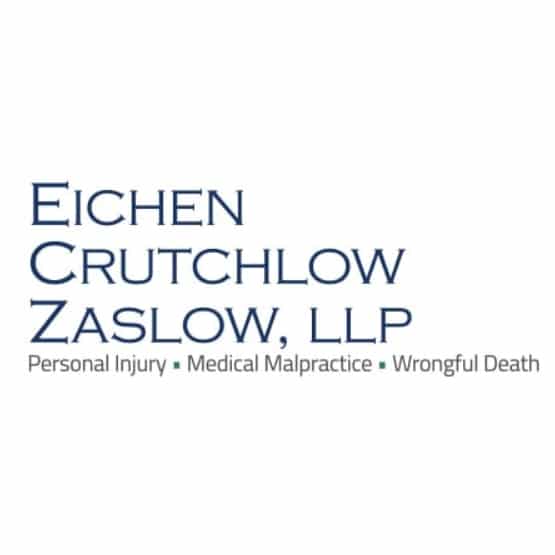What Is the Most Common Birth Injury?
 Welcoming a new baby into the world is typically one of the most exciting moments in a parent’s life. It is the culmination of months, sometimes even years, of waiting. It can also be one of the scariest and most stressful times – especially if something goes wrong and your baby is injured during or immediately after labor or birth.
Welcoming a new baby into the world is typically one of the most exciting moments in a parent’s life. It is the culmination of months, sometimes even years, of waiting. It can also be one of the scariest and most stressful times – especially if something goes wrong and your baby is injured during or immediately after labor or birth.
Birth injuries, or birth trauma as they are also called, occurred at a rate of 1.9 per 1,000 live births in 2013 in the United States, according to the Agency for Healthcare Research and Quality. Injuries happen for many reasons, some of which may be related to the baby’s journey through the birth canal. However, not all birth injuries are due to natural causes. Some are the result of medical negligence on the part of medical staff. When a nurse, doctor, midwife, intern, anesthesiologist, hospital or medical center fails to meet an appropriate standard of care and keep your baby safe during labor and delivery, they may be responsible for any injury your baby suffers during labor and delivery.
While there are a variety of birth injuries that may occur, the most common birth injury is head trauma.
If your baby suffered head trauma during labor or delivery, the medical staff who handled the birth may be responsible. An experienced NJ birth injury lawyer may be able to help.
What are the most common types of head trauma that happen during birth?
Head trauma that occurs during birth includes a range of injuries, many of which are considered minor and which resolve on their own in the hours, days, and weeks following birth. These more minor head injuries include:
- Head molding. According to the Merck Manual, head molding refers to the “normal change in shape of the baby’s head that results from pressure on the head during delivery.” Most cases are minor, with the baby’s head shape becoming more rounded over the course of several days after birth.
- Swelling and bruising of the scalp. This is typically not considered serious and resolves within a few days following birth.
- Scratches to the scalp. When instruments such as monitor leads attached to the scalp, forceps, or vacuum extractors are used during or immediately following birth, they may scratch the baby’s scalp.
- Bleeding outside of the skull bones. According to the Merck Manual, this can lead to “an accumulation of blood either above or below the thick fibrous covering (periosteum) of one of the skull bones.”
- This is a blood accumulation that occurs below the periosteum. Soft to the touch, cephalohematomas can increase in size after birth but typically go away on their own in the weeks or months following birth. They rarely require treatment but should be evaluated and monitored by a pediatrician – especially if they become red or start to drain liquid.
It is important to note that any head trauma during birth can potentially be serious, especially if it is not properly monitored and treated. Serious head injuries that can occur during labor and delivery include:
- Cerebral palsy. Head trauma has been noted as a possible cause of cerebral palsy in otherwise healthy newborns. There is no cure for cerebral palsy, which affects a person’s ability to move and maintain balance and posture.
- Subgaleal hemorrhage. Sometimes caused by the use of forceps or a vacuum extractor, a subgaleal hemorrhage is bleeding that occurs directly under the scalp above the periosteum covering of the skull bones. A subgaleal hemorrhage can cause substantial blood loss and lead to shock and may lead to the baby requiring a blood transfusion.
- Skull fracture. One or more bones of the skull may be fractured before or during the birth process. While many fractures are considered minor and heal on their own, that is not always the case. Some skull fractures, known as depressed fractures, form an indentation in the skull and may require surgery to correct the deformity.
- Intracranial hemorrhage. Bleeding in and around the brain, known as intracranial hemorrhage, occurs when blood vessels rupture. This can be the result of a birth injury, an illness in the newborn that decreases the delivery of blood or oxygen to the brain, or a blood clotting issue. More common among premature infants and babies who have hemophilia, bleeding in the brain may not cause symptoms in some infants. In others, however, it may present as lethargy, poor feeding, and/or seizures. Depending on the type of hemorrhage and the severity, newborns may be admitted to a neonatal intensive care unit (NICU) for monitoring, supportive care, intravenous fluids, and other treatments to help maintain their body function.
What are some common causes of birth injury?
A baby’s size at birth and his or her position during labor and delivery may play a role in the baby sustaining certain birth injuries. According to Stanford Children’s Health, birth injuries may be linked to several factors, such as:
- Prematurity. When a baby is born before 37 weeks, its body is more fragile and may be injured more easily than a full-term baby.
- Birthweight. Babies who weigh more than approximately 8 pounds, 13 ounces are at increased risk of birth injury due to their size.
- Abnormal birthing presentation. A baby who is in the wrong position at birth – buttocks first, or breech, rather than head first, for example – may be injured during labor and delivery. Breech births can lead to brachial plexus injuries. If an external cephalic version (ECV) is attempted under the wrong circumstances, it can lead to placental abruption, ruptures of the membrane, or even preterm labor.
- Prolonged labor. Labor that fails to progress at a normal pace may result in birth injuries, including hypoxic-ischemic encephalopathy, cerebral palsy, brachial plexus injuries, shoulder dystocia, and/or seizures.
- Cephalopelvic disproportion.Depending on the size and shape of the mother’s pelvis, a vaginal birth may not be possible. If a doctor tries to force a mother into a vaginal delivery, the child may suffer brachial plexus injuries, or even be deprived of oxygen.
- Maternal obesity. The mother’s weight may contribute to complications during labor and delivery.
Even with these common complications, in most situations trained labor and delivery nurses, doctors, and other medical staff should be able to prevent serious birth injuries.
What are the long-term effects of head trauma that occurs during birth?
While many head injuries that occur during birth are minor and resolve within days, weeks, or months following delivery, that is not always the case. Serious and severe head trauma can and does occur during birth and may be the result of medical negligence on the part of the doctors, nurses, and other medical staff as well as the hospital where you delivered your baby. These injuries can change your baby’s life forever, leading to lifelong medical conditions such as disfigurement, seizures, developmental delays, or mobility issues. It can lead to incurable conditions like cerebral palsy, or permanent nerve damage from conditions like Erb’s palsy, Klumpke’s palsy, global palsy, or other brachial plexus injuries. Head trauma caused by a negligent medical professional can also leave you with expensive bills for your baby’s immediate and long-term care.
If your child suffered a birth injury such as head trauma, the doctors, nurses, and other medical staff responsible for his or her care may be to blame. The birth injury lawyers at Eichen Crutchlow Zaslow, LLP can help. We understand the pain and suffering that birth injuries can cause a child and his or her family. As experienced trial lawyers, we fight hard to ensure you receive the compensation you deserve on behalf of your child. No family should have to struggle due to medical conditions caused by negligent hospitals and medical professionals. From our offices in Edison, Red Bank and Toms River, we serve clients throughout NJ. Call us today at 732-777-0100 or complete our contact form to schedule a consultation with one of our NJ birth injury attorneys.

Eichen Crutchlow Zaslow, LLP has purposely remained small in size, because it is important to us that we get to know our clients and their needs. Larger NJ injury firms may churn out case after case, but that’s not how we operate. Partners Barry Eichen, William Crutchlow, and Daryl Zaslow have created a firm with the resources to handle complex litigation, and a team that takes your case personally.
Find out more about Eichen Crutchlow Zaslow, LLP
